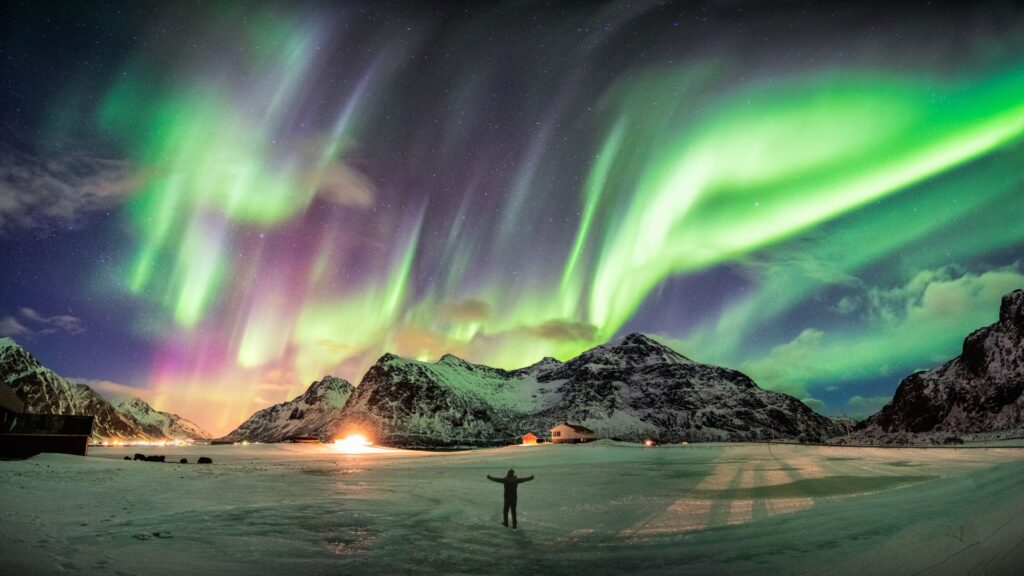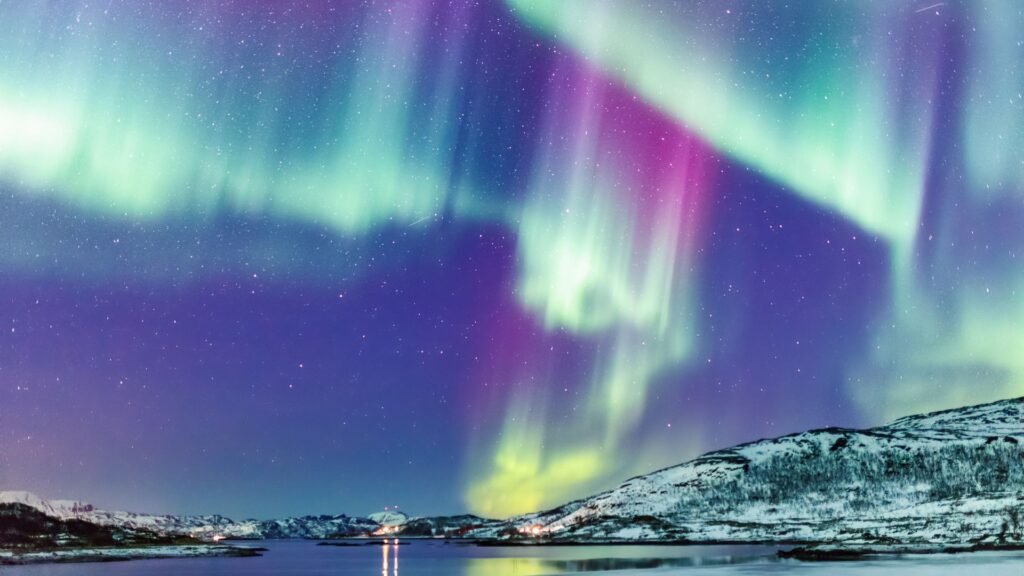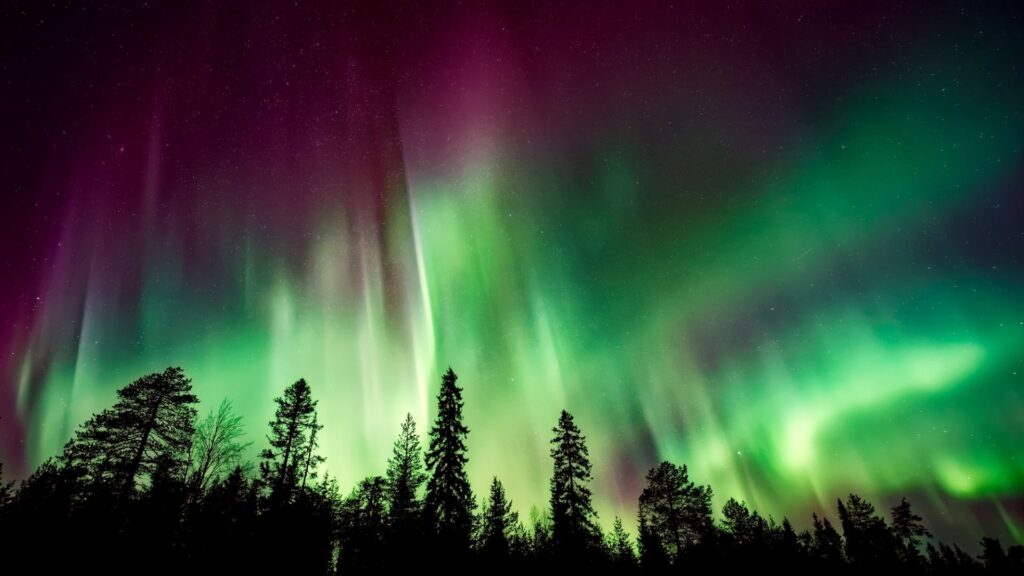The aurora borealis - what is it, how is it formed and where to see it?
The aurora borealis has fascinated people all over the world for thousands of years. It is one of the most beautiful atmospheric phenomena that attracts travellers, nature lovers and photographers from all corners of the planet.
The aurora borealis has fascinated people all over the world for thousands of years. It is one of the most beautiful atmospheric phenomena that attracts travellers, nature lovers and photographers from all corners of the planet.
What exactly is the aurora borealis, where does it come from and where can it be seen?

What is the aurora borealis?
The aurora borealis, also known as aurora borealis (in the northern hemisphere) and aurora australis (in the southern hemisphere), is produced by the interaction of the solar wind with the Earth's magnetic field.
The sun emits huge amounts of charged particles (electrons and protons), which form the solar wind. Most of these particles are deflected by the magnetic field that protects us, but some make their way to where the field is weakest, near the poles. Once in the atmosphere, they collide with oxygen and nitrogen atoms, resulting in the emission of light - the aurora borealis.
What does the aurora borealis look like?
Auroras take many forms: they can be arranged in spirals, ribbons, arcs, vertical columns of light, streamers, fans and even geometric figures.
Typically, the aurora borealis is maroon, green, red or purple in colour. Its colour depends on the altitude at which the reactions of the solar wind particles take place - depending on which gases they combine with, the aurora takes on different colours.
The colours of the aurora depend on the type of gas in the atmosphere and the altitude at which the reaction takes place:
- Green colour - to combine with oxygen at lower altitudes (around 100-150 kilometres),
- Red and orange - to combine with oxygen above 240 kilometres, at high solar activity,
- Yellow - to combine with a mixture of nitrogen and oxygen;
- Purple and blue - to merge with nitrogen at lower altitudes (less than 100 kilometres) when solar activity is high.
Aurora can also combine several colours at the same time.

Solar activity and the aurora
The aurora phenomenon is directly related to the activity of the sun, which goes through 11-year cycles of activity. In the last years of the cycle, there is a so-called solar maximum, during which the amount of emitted particles is higher.
There is also a phenomenon on the surface of the sun called coronal mass ejections. These are powerful explosions that can cause geomagnetic storms on Earth, the results of which can be strong auroras, visible even far from the poles. Geomagnetic storms can also affect communication and navigation systems on Earth.
Where and when to see the aurora borealis?
The best conditions for aurora sightings occur beyond the Arctic Circle:
Northern hemisphere (aurora borealis):
- Norway, Sweden, Finland, Iceland
- Alaska (USA), Canada
Southern hemisphere (aurora australis):
- Antarctica, Patagonia (Chile and Argentina)
- New Zealand, Tasmania, subantarctic islands.
Auroras are best observed during the winter season:
- in the northern hemisphere: from November to March, particularly in December, January and February,
- in the southern hemisphere: from March to September.
Weather conditions are also important: dark, cloudless skies and little artificial light.

Can the appearance of the aurora borealis be predicted?
Yes - there are special websites and apps that track geomagnetic forecasts and report on the likelihood of its occurrence.
Northern lights in Poland
As the occurrence of the aurora is dependent on solar activity, we can sometimes also observe it in Poland. This happens when there are very strong magnetic storms, which emit a large number of particles.
Of course, these sights are not as spectacular as at the poles, rather they take the form of purple or red glows. In recent years, it has been seen in the north of our country, but also further afield - around Warsaw, for example.



